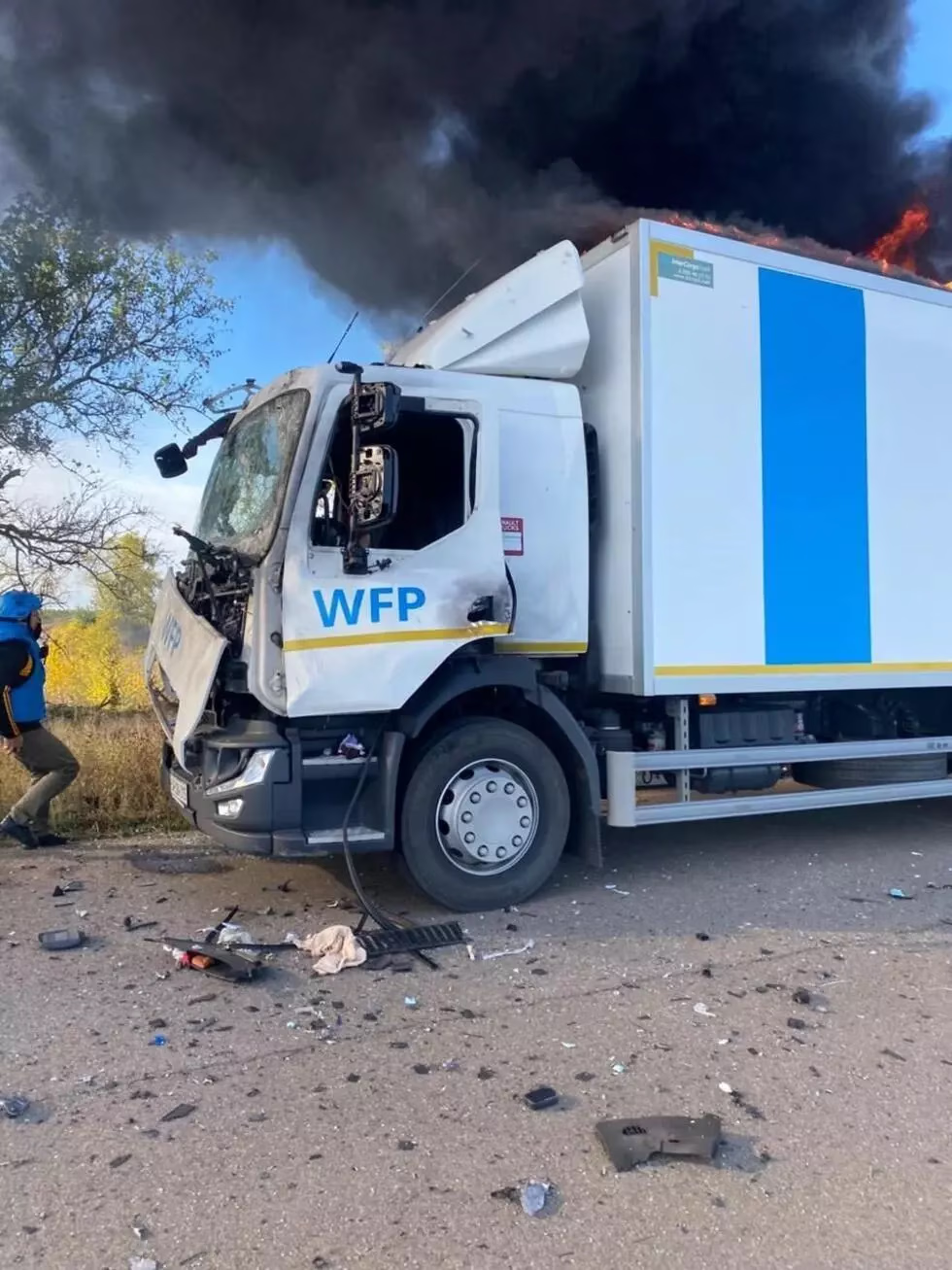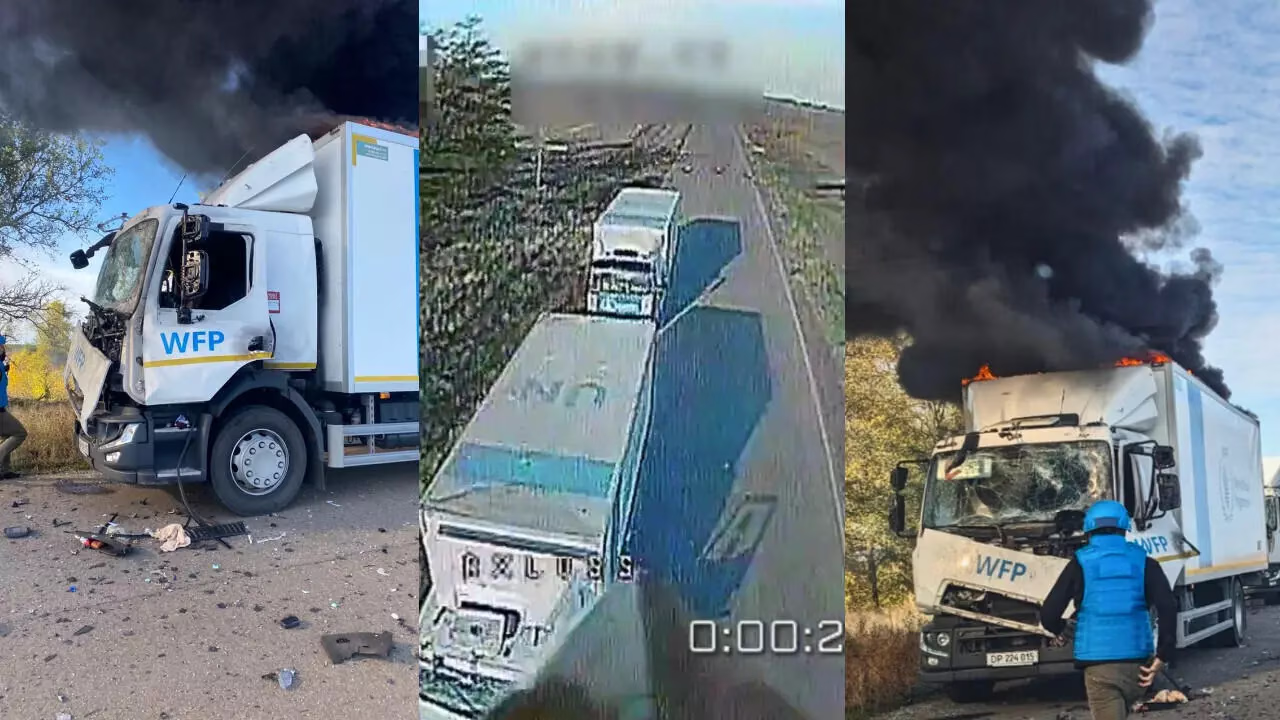On the morning of October 14, a convoy of trucks organized by the UN Office for the Coordination of Humanitarian Affairs (OCHA) and the World Health Organization (WHO) set out for Bilozerka. The vehicles were carrying medicines, hygiene supplies, and other humanitarian aid for local residents. The sides of the trucks clearly displayed the emblems of the UN, WHO, and the World Food Programme.
Despite this, the convoy came under attack from at least three Russian FPV drones. These small unmanned aircraft are equipped with an explosive charge and a camera—from which they take their name, short for “first-person view.” Operators control them through virtual-reality headsets, steering the drone directly toward its target before detonating the payload.
@piatak.yevhen Дорогою на Білозерку! #АтакаДронів #ВійнаВУкраїні #Білозерка #РазомВистоїмо #Допомога ♬ оригінальний звук - Piatak Yevhen
Reports indicate there were no casualties, but two trucks were damaged and rendered inoperable, and one vehicle’s humanitarian cargo was destroyed.

A photo published on October 14, 2025, on X by the UN Office for the Coordination of Humanitarian Affairs (OCHA) shows two trucks from the humanitarian convoy hit by Russian drones about one kilometer west of the village of Bilozerka. The vehicles are clearly marked with World Food Programme (WFP) logos on the front and sides, as well as the “UN” inscription on the roof.
OCHA later reported that when the convoy began unloading aid in the settlement, it came under artillery fire. Two other trucks had to be abandoned, and they too were soon struck by FPV drones.
“Deliberate attacks on humanitarian workers and assets constitute a grave violation of international humanitarian law and may amount to a war crime,” the organization said in a statement. “Civilians remaining in frontline areas are entirely dependent on humanitarian aid, and mission staff must be able to deliver life-saving supplies safely.”
The following day, a video of the attack appeared on several Telegram channels linked to Russian military bloggers. Among them was the channel “From Mariupol to the Carpathians,” run by blogger Alex Zov. Beneath the video, he wrote: “Yesterday morning, the enemy tried to pass through the village of Bilozerka toward Kherson in a convoy. Reconnaissance detected the movement of dual-use cargo, and within minutes FPV drone groups ‘Dnipro’ began striking the convoy.”
The phrase “dual-use cargo” in this context implies materials that could be used for both civilian and military purposes. Thus, the blogger suggested that the UN convoy was transporting military equipment—a claim that OCHA categorically denied.
